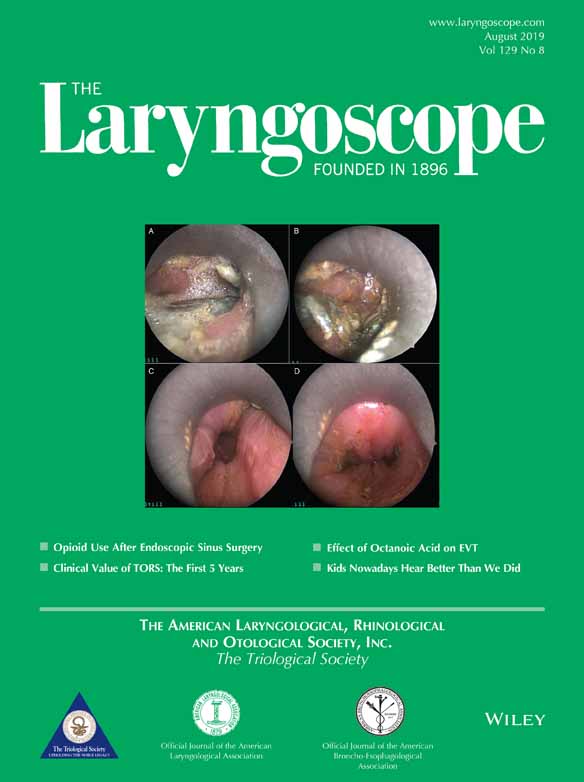Should patients with obstructive sleep apnea be screened for depression?
BACKGROUND
Screening patients for comorbid diseases is critical to comprehensive patient care. It is well established that patients with obstructive sleep apnea (OSA) have an increased prevalence of depression,1, 2 yet screening is not yet routine. Recognizing and addressing symptoms of depression may have a multifaceted positive impact on these patients, including improved quality of life, reduced psychosocial disease burden, and improved compliance with patient-motivated management strategies such as continuous positive airway pressure (CPAP) and weight loss. Thus, undiagnosed depression can lead to untreated OSA and progression of cardiovascular disease. This raises the question of whether it is worthwhile to screen patients with OSA for depression.
LITERATURE REVIEW
The 1968 World Health Organization Principles for Screening for Disease state that screening must assess for an important health problem that can be addressed. In this case, there is a consistent increased prevalence of depression in patients with OSA. In Taiwan, a large observational study including 6,427 patients with OSA found that patients with OSA were more likely to develop depression during the 5-year follow-up period compared to patients without OSA (6.6% vs. 2.6%, hazard ratio [HR] 2.48).1 In the United states, a large cross-sectional study of 9,714 patients found a similar prevalence of depression in men (odds ratio [OR] = 2.4) but even greater prevalence in women with OSA (OR = 5.2) compared to patients without OSA.2 These are just two among many published reports showing that depression can present in tandem with OSA.
For efficient screening, it is ideal to target high-risk groups. There is further data suggesting that certain patient characteristics are predictive of developing depression in OSA. Ishman et al. conducted a case-control study that found higher scores on the Epworth Sleepiness Scale (ESS) significantly correlated with higher scores on the Beck Depression Inventory (r = 0.32, P = 0.012).3 ESS was the only significant variable in a multivariable linear regression model that controlled for race, sex, age, and respiratory disturbance index (P = 0.32). Although ESS scores are not validated to screen for depression itself, this suggests higher degrees of sleepiness should prompt formal screening for depression. In a large population study, Dai et al. collected data on demographics, OSA, and depression in 1,327 Chinese patients.5 Using stepwise linear regression analysis, they found a statistically significant association between depressive status and single martial status, apnea–hypopnea index, hypoxemia, and reduced family and social supports.
The strong association between OSA and depression is corroborated by biological theories on the pathophysiology and temporal relationship between depression and OSA. Some suggest there is a unidirectional causal relationship because poor sleep quality can easily affect mood and mental health. Others suggest there could be a common pathophysiology via increased proinflammatory cytokines causing neural injury, or abnormalities in serotonin uptake affecting both depression and upper airway dilator activity.1 Independent of other sociodemographic factors and comorbidities, Pan et al. demonstrated a bidirectional temporal association in a retrospective cohort study of 6,427 patients in Taiwan. Over a 5-year follow-up period, patients with OSA were more likely to be diagnosed with depression compared to those without OSA. Inversely, patients diagnosed with depression were more likely to be diagnosed with OSA compared to patients without OSA (HR = 2.30).1 This highlights the complex, intertwined etiology of OSA and depression and the need for caregivers of both diseases to be cognizant of the early signs of the other disease.
Ultimately, screening initiatives are only worthwhile if there are effective management strategies to limit the progression of the identified disease. Although the causal pathophysiology is not definitive, there is evidence that treating OSA can improve depressive symptoms. Povitz et al. conducted a systematic review and meta-analysis that demonstrated patients using CPAP for OSA have a significantly greater improvement in depressive symptoms if they have depression at baseline compared to no depression at baseline (pooled standardized mean difference of 2.004 vs. 0.197).5 Random effects meta-analysis of five trials with mandibular advancement devices showed significant improvement in depressive symptoms compared to patients who had no OSA treatment (standardized mean difference = 0.214).5 This demonstrates that OSA management may have a secondary symptom benefit for patients who have a positive screen for depression. This informs comprehensive, multi-disciplinary care for the patient as OSA treatment becomes a component of depression management.
BEST PRACTICE
Screening for depression in patients with OSA would be worthwhile because there is a high rate of comorbidity, and both are intertwined in their pathophysiology and management. Clinicians should pay special attention to high-risk populations such as those who are more sleepy, single, have more severe OSA and hypoxia, or have reduced family or social supports. Once identified, there is evidence to support that management of OSA can reduce depression. This has important implications for patient education in describing the benefits of OSA interventions. Future research should examine the impact of psychiatric treatment of depression on OSA, or the effect of surgical OSA treatment on depression.
LEVEL OF EVIDENCE
One study was a systematic review and meta-analysis of randomized control trials (level 1).5 One study was a retrospective cohort study (level 3)1. One study was an individual case control study (level 3).3 Two studies were cross-sectional surveys (level 4).2, 4




